Every seventh inhabitant of our planet has bacterial rhinitis. Statistics say that 13% of people suffer from diseases of the nasal cavity and medicines for the common cold account for about 30% of the drug market.
What causes a runny nose and what provokes it?
Rhinitis (runny nose) is in the form of an independent disease, and can accompany other diseases. Rhinitis is divided into infectious and non-infectious, allergic and non-allergic. Allergic ones cause dust particles, mold spores, pollen of some plants, and animal hair that enter through the nasal cavity.
- Does SINUS or HAYMORIT suffer?
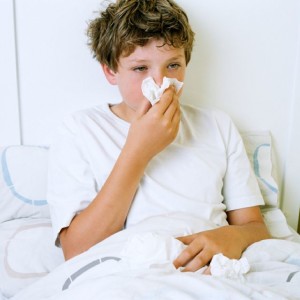
- curvature, polyps and deformities of the nasal cavity;
- and foreign bodies;
- changes in hormonal levels;
- external irritants (dust, gases, chemicals) without an allergic component;
- long-term treatment with medications;
- frequent hypothermia;
- hereditary reasons;
- bacterial and viral infections.
The development of non-allergic rhinitis is facilitated by:
Bacterial rhinitis is caused by the presence of a pathogenic bacterial environment in the nasal cavity. Along with swelling and inflammation, difficulty breathing through the nose, a bacterial infection is distinguished by a special specific feature - yellowish-greenish mucus. This color is given by dead bacteria and leukocytes. If the color of the mucus is more green, this indicates that a viral infection has joined the bacterial infection. In the process of the disease, 3 stages are conventionally distinguished, which are accompanied by certain symptoms.
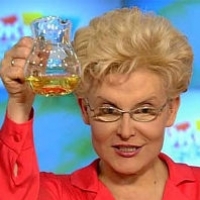
- Antibacterial therapy, consisting in a combination of bactericidal and bacteriostatic drugs. The most commonly used are Erythromycin, Clarithromycin, Midecamycin. Drugs from the cephalosporin group are used: Cefodox, Ceftriaxone. The drugs are taken orally, in difficult cases, injection therapy is performed.
- To cleanse the nose of mucus and facilitate breathing, Quicks, Aqualor, Miramistin, etc. are prescribed.
- Irrigation with brine.
- Supportive vitamin therapy.
Often used after antibiotic therapy folk recipes... They are used to treat children and adults prone to allergic reactions to certain drugs.
- Grate the parsley root, squeeze out the juice. Bury the nose every 2 hours.
- Mix onion juice, beet juice and honey in equal proportions. Bury in both nostrils. For children, dilute the mixture in half with water.
- Aloe juice drip into the nose 5 drops three times a day.
- Well relieves symptoms and lays the nose with menthol oil. Put 3 drops of oil in each nostril, lubricate the wings of the nose and temples.
- An excellent remedy for the treatment and prevention of rhinitis, especially during the season of viral infections, is laundry soap. You need to soap your finger and wipe it.
How to help the little ones?
Even the most caring parents for their children are forced to treat children's rhinitis several times a year. Symptoms bacterial rhinitis in children are the same as in adults. But small children, especially under one year old, cannot blow their nose on their own. The nasal cavity, nasal passages in babies are small and narrow, and therefore even a slight swelling of the mucous membrane makes it difficult to breathe through the nose. The infection can quickly spread to the ears, trachea, and bronchi.
The main rule for parents is to closely monitor the course of rhinitis.
If a child's runny nose is small and does not last long, parents can treat it on their own. But if the temperature rises, the child has something painful or has lost appetite, he must be shown to the doctor.
- for children under 3 years old, rinse the nose with a pear or syringe;
- give antibiotics to drink or instill antibiotic solutions in the child's nose without a doctor's prescription;
- treat a runny nose in a child with vasoconstrictor drops without a doctor's prescription;
- use in the treatment of carrot, beet and onion juices, which are aggressive on the child and can burn her.
Cold treatment
For the treatment of any cold
· The operating moments are of great importance: ventilation of the room, sufficient humidity, comfortable temperature in the room.
· It is very important to drink plenty of fluids from the first days of illness. The abundance of fluid in the body helps to eliminate toxins and prevents mucus (snot) from thickening.
· You should not bury a child in the nose without a doctor's prescription, what others have advised: breast milk, beet juice, aloe juice, etc. This can lead to a deterioration in the child's condition and other undesirable complications.
· In the stage of resolving a runny nose (not in the first 3 days of illness), when the child's temperature has already returned to normal, you can make mustard socks, foot baths.
But parents always want to urgently and immediately help the child and they are most interested in what drops in the nose can be dripped into the child with a cold.
Treatment of an infectious rhinitis
There are 2 groups of drugs for instillation into the nose, which are recommended to start using for acute infectious rhinitis from the first days or even hours of illness before the arrival of the doctor. These are drops based on seawater (weak saline solutions) and human interferon preparations. And one group of drugs that is allowed to be used before the arrival of the doctor only as a last resort, if a runny nose strongly interferes with the child is vasoconstrictor drugs.
Saline solutions
The first remedies for any infectious rhinitis (viral and bacterial) are saline solutions, they will not harm even with allergic rhinitis... They are either sodium chloride solution or seawater.
When a runny nose appears, it is recommended to immediately begin to instill drops or use a spray from this group of drugs. Saline solutions prevent mucus from drying out, promote its better discharge and help to remove the causative agent from the mucous membrane.
This group of drugs includes: "Salin", "Aquamaris", "Marimer", "Aqualor", "Quicks", "Otrivin-Baby" and others.
It is more convenient to use sprays rather than drops, they penetrate deeper into the nasal passages and are more evenly distributed over the mucous membrane. But if there is no spray, drops will do.
An overdose of these drugs is not possible. They have no side effects.
All drops and sprays from other groups of drugs are recommended to be instilled or injected into the nose after this procedure, then the drugs will penetrate deeper into the nasal passages and remain on the nasal mucosa, and not be removed from it along with mucus.
Antiviral drugs.
They are used only with a cold of viral origin.
In the first three days from the onset of the disease, human interferon preparations are used: interferon in the form of drops, gripferon in the form of drops or spray or genferon-light in the form of a spray in the nose.
These are drugs aimed at the main cause of the disease - viruses. The interferon contained in them acts in a place - on and in the mucous membrane, helps to neutralize viruses that are there and have not yet entered the bloodstream. When applied in more late dates the effectiveness of these drugs decreases, since they practically do not affect the viruses circulating in the blood, they only have a weak immunostimulating effect. If from the first days of the disease there is abundant discharge from the nose, the effectiveness of treatment with these drugs also decreases, since most of the medicine does not fall on the mucous membrane, but is excreted along with the mucus.
Genferon-light spray is not indicated for use in children up to 14 liters, although Genferon-light suppositories in children have been successfully used since birth. This is due to the fact that the spray has not yet passed clinical trials in a group of children.
Interferon and gripferon are used in children from birth.
Apply them according to the instructions for the drugs.
Interferon can be inhaled through a nebulizer.
Derinat does not belong to interferon preparations, it is an anti-viral drug, but it has a different mechanism of action. It does not apply to the means of first use for ARVI and is used only as directed by a doctor.
Derinat, or its full name deoxyribonucleate, is a protviral drug that has an immunomodulatory effect after absorption into the blood. This medicine is not a direct remedy for the common cold. It strengthens the body's defenses and helps it fight the cause of the disease - viruses. It does not have a quick effect on a cold, but it helps the body to cope with the disease. Approved for use in children from birth. Duration of use from 5 days to 1 month. When using the drug, allergic reactions may develop, the drug, according to the instructions, has no side effects.
Vasoconstrictor drugs
They are used for rhinitis of any origin, but only temporarily relieve symptoms.
This is a group of drugs (adrenomimetics) that narrow the blood vessels in the nasal mucosa, reduce swelling and make nasal breathing easier.
These include drugs: "For the nose", "Nazol", "Otrivin", "Nazivin", "Naphtizin", "Xilen", "Xymelin", "Adrianol", etc.
There is also a drug "Vibrocil" with a combined: vasoconstrictor and antiallergic effect. Vibrocil drops are used in children from 1 year old, spray - from 6 years old.
These drops act very quickly. Facilitates nasal breathing a few minutes after application. Therefore, it seems to everyone that this is the most the best means from a runny nose. In fact, these are symptomatic drugs, that is, a drug that temporarily eliminates the symptom of the disease, but does not affect its cause. If the cause of the runny nose: a virus, bacteria or allergen is not eliminated, then after stopping treatment with these drugs, the runny nose resumes after a few hours.
The degree of effectiveness of the drug depends on the percentage concentration of the active substance in the drug. The higher the%, the more noticeable the effect after application.
In young children, less concentrated drugs are used, since they have very good blood circulation in the nasal mucosa, drugs penetrate into the blood to a greater extent than in adults, and the likelihood of side effects increases.
Preparations of this group can be used before the arrival of the doctor, if the difficulty in nasal breathing significantly disrupts the child's condition (the child cannot eat, sleep, etc. due to a runny nose, etc.).
But you need to do this very carefully.
· Use only medicines approved for the child's age. Up to 1 year old, Nazol-Baby, Nazivin for babies (0.01%), Otrivin nasal drops or spray for children 0.05% are allowed (not to be confused with Otrivin-Baby, which belongs to the group of saline solutions). From 2 to 6 years: Nazivin 0.025%, Xymelin 0.05%, Otrivin nasal drops or spray for children 0.05%, Tizin nasal drops for children 0.05%, Xymelin 0.05%, In children over 6 years of age, more concentrated preparations,
Do not exceed the age dose,
Do not exceed the maximum frequency of use, which is indicated in the instructions for the drug (can be used less often than indicated, but more often it is impossible),
Do not use on your own, without a doctor's prescription for more than 3 days,
It is best to first clear mucus from the nasal passages as described above, and then drip or inject a vasoconstrictor into the nose.
The use of vasoconstrictor drops for a cold is optional. The doctor usually prescribes them for 3-7 days if
A runny nose is combined with conjunctivitis, a decrease in edema of the nasal mucosa in this case is necessary to restore the patency of the nasolacrimal canal,
A runny nose is combined with otitis media - this helps to restore the patency of the Eustachian tube,
Runny nose complicated by sinusitis - to improve the outflow of mucus from the paranasal sinuses,
If a runny nose significantly disrupts the child's condition.
With the usual viral rhinitis, as a rule, if these drugs are prescribed, then in the first 3 days of illness, then the need for the use of vasoconstrictor drugs disappears.
If the child has a moderate amount of mucus and it separates well, it is better to often free the nose from mucus with a saline solution and do without the use of vasoconstrictor drops or limit the frequency of their use, for example, drip only before bedtime and before daytime sleep.
It is not at all necessary to apply them 3 times a day for 5 days, if the child's runny nose does not bother the child during the day, or if he feels better after 2 days.
It is impossible to use these drugs for a long time (more than 7-10 days) without a doctor's prescription, since they have side effects: dryness and, even, atrophy of the nasal mucosa, irritation, burning, loss of smell, hypersecretion of mucus (i.e., increased runny nose after instillation of the drug), edema of the nasal mucosa, possibly the development of systemic side effects: palpitations, arrhythmia, headache.
Oil drops in the nose
Oil in drops is needed so that the nasal mucosa does not dry out, to constantly keep it moist. No therapeutic action the oil base does not have drops on viruses or the nasal mucosa. You can use liquid petroleum jelly or olive oil to keep the nasal mucosa moist.
The healing effect of oil drops is associated with other components, which, in addition to the oil base, are contained in the drops.
Oil nasal drops are not used in children under 2 years of age.
Pinosol and tizine are currently the most popular of the official medicines intended for nasal instillation.
Tizine is vasoconstrictor drops oil-based, this drug is the same as other vasoconstrictor drugs.
In children under 2 years of age, tizine is not used, 0.05% solution is used in children from 2 years of age, 0.1% solution - from 6 years.
Tizine, due to the oil base, acts more gently and lasts longer on the mucous membrane, less likely to cause side effects such as burning and dryness of the mucous membrane.
There is also Tizin-Xylo and Tizin-Xylo-Bio, which do not contain oil, therefore it does not belong to the group of oil drops.
Pinosol is a fundamentally different drug. It contains essential oils of pine, eucalyptus, mint and Vitamin E (tocopherol acetate).
Its components have antimicrobial, anti-inflammatory, anti-edema effect, reduce the viscosity of mucus, and facilitate its separation.
This medicine has disadvantages
Pinosol does not contain a vasoconstrictor component, therefore it does not give quick relief with a cold. Parents want the result to be immediate, a few minutes after application, but this is not observed here, so many people think that the medicine does not help.
Pinosol, like other oil-based nasal drops, is not used in children under 2 years of age.
Young children are often allergic to the components of the drug, then its use leads to an increase in the common cold, and in the worst case to the development of severe allergic reactions: urticaria, Quincke's edema, anaphylactic shock ...
Spray pinosol is not used in children under 6 years of age, since it can penetrate into the lower airways and provoke the development of bronchospasm, tracheitis or bronchitis.
Pinosol is not used in the first 3 days of illness and is not effective in acute viral rhinitis, but it has a good effect in protracted rhinitis with the addition of a bacterial infection (if there is no allergy to the components of the drug), with sinusitis, adenoiditis.
With a runny nose in children (over 3 years old) are sometimes used
Thuja oil,
Sea buckthorn oil,
All these drugs have a weak anti-inflammatory, antimicrobial effect, and the metabolic (restorative) effect predominates, they restore the damaged mucous membrane and normalize the secretory activity of the glands, therefore, in the acute period of the common cold, their use is impractical, they may be more effective with protracted rhinitis with the addition of a bacterial component ...
To prevent the mucous membranes from drying out and constantly keeping them moist, it is allowed (for children over 3 years old, if the child does not suffer from allergies), the use of an oil solution of vitamin A, olive, petroleum jelly. But the oil has no effect on the cause of the common cold (viruses or bacteria).
Antibacterial drops
These drops are used only to treat a cold caused by a bacterial pathogen or to treat sinusitis.
The indications for their use are
Discharge from the nose of green or yellow, usually thick mucus,
Prolonged rhinitis, obviously not of an allergic nature, not amenable to treatment with the above means, especially if the child has enlarged adenoids, tonsils,
Attachment of sinusitis,
Isolation of a bacterial pathogen during sowing of nasal mucus.
At present, 3 antibiotic drugs are most often used in children: Isofra Bioparox and Polydex.
Isofra is a purely antibacterial drug that does not contain a vasoconstrictor component, therefore it does not quickly facilitate nasal breathing.
Isofra is a spray containing the antibiotic framycetin, which belongs to the aminoglycoside group. It is a topical broad-spectrum antibiotic. It is used in children from 1 year old, only as directed by a doctor. If there is no noticeable effect within 3-5 days from the start of use, the drug should be changed.
Bioparox
Bioparox is a broad-spectrum antibacterial drug that is active against most bacteria and fungi. Available as a spray. Does not contain a vasoconstrictor component. It also has anti-inflammatory properties. It is used in children from 2.5 years of age.
Polydexa
Polydexa is a combined preparation containing two antibiotics: polymyxin B and neomycin, the vasoconstrictor component is phenylephrine, and the hormone is dexamethasone.
Polydexa has a much wider spectrum of antibacterial action, it facilitates nasal breathing a few minutes after instillation (due to the vasoconstrictor component), and dexamethasone has an anti-inflammatory, anti-edema and anti-allergic effect.
Polydexa is a drug for the complex treatment of the common cold bacterial origin and sinusitis. It can have a beneficial effect both in acute viral rhinitis and in allegric, due to the vasoconstrictor and hormonal component, but its use in these cases is inappropriate, since it can lead to the development of microbial resistance to antibiotics
Polydex is used in children from 2.5 years of age.
When using any of this group of drugs, it is possible to develop allergic reactions, or local side reactions: dry mucous membranes, burning, sneezing, itching.
Other antimicrobial drops
Protargol
Protargol or colloidal silver solution has astringent, antiseptic and anti-inflammatory effects.
On the inflamed mucous membrane of the nose, protargol, due to the deposition of protein by silver, forms a protective film. As a result, the sensitivity of the mucous membrane decreases, the blood vessels narrow, inflammation decreases, and silver ions suppress the growth of bacteria and fungi.
Protargol in children is used in the form of a 1-2% solution, only as prescribed by a doctor, and is sold only in the prescription department (where drugs are prepared to order) of the pharmacy. The shelf life of the finished medicine is 2 weeks.
One of the advantages of Protargol over the above antibacterial drugs is that it is used in children from birth. For newborns, immediately after birth, it is instilled into the eyes to prevent blepharitis (inflammation of the eyelids). In children from 0 to 1 year old, only 1% solution is used for the treatment of a cold, then 1% or 2% solution can be used at the discretion of the doctor.
Protargol does not have a vasoconstrictor component, therefore, it does not quickly facilitate nasal breathing with a cold.
Protargol is a broad-spectrum drug - acts on absolutely all microbes and fungi. But it is effective only for bacterial rhinitis, with viral infection it can have the opposite effect, since if bacteria die, viruses begin to actively multiply.
When using protargol, side effects are possible: burning and dryness of the mucous membranes, headache, dizziness, drowsiness. Protargol, like any medicine, may develop an allergic reaction.
Complex nose drops
Prior to the development of modern antibacterial sprays, complex nasal drops were often used to treat bacterial rhinitis in children.
They were prepared according to the doctor's prescription in the prescription department individually for each child.
Mandatory components of these drops
Epinephrine hydrochloride - vasoconstrictor,
Furacillin is an antiseptic,
Distilled water as a solvent.
To reduce swelling of the mucous membrane and remove the allergic component, diphenhydramine is sometimes added to complex drops.
Streptomycin or another antibiotic can be added to the compound drops to enhance the antibacterial effect.
Hydrocortisone is sometimes added to relieve swelling and inflammation.
Complex nasal drops are used only for bacterial rhinitis. The mechanism of action of these drops is determined by the composition.
They have a short shelf life of 2 weeks.
Currently, they continue to be used in young children, because they can be used from birth for the treatment of bacterial rhinitis, and modern antibacterial drugs are not used in babies (Isofra is approved for use in children from 1 year old, Bioparox and Polydex - from 2.5 years old).
Compound drops can be used in children from birth. But the composition of these drops and the ratio of the components depends on the age of the child and the characteristics of the course of the disease, is prescribed by the doctor for each child individually and is prescribed on a prescription.
“Complex drops” is just a general abstract name and it makes no sense to search the Internet for a ready-made recipe for “complex drops”. And cooking them yourself at home is dangerous for a small child. On this issue, you must definitely consult a doctor.
Since complex nasal drops always contain a vasoconstrictor component (adrenaline), they are usually not prescribed for more than 7 days.
An allergic reaction is possible on the components of the drops. With their use, as well as with the use of other drugs, the development of side reactions is possible: dry mucous membranes, burning, itching, palpitations, headaches.
Rinofluimucil
It is used only for the treatment of sinusitis and bacterial rhinitis with viscous thick mucus.
Rinofluimucil is a drug that does not belong to the antibacterial group. It does not affect germs.
This is a combined preparation containing a vasoconstrictor component and - acetylcysteine \u200b\u200b- a substance that thinns thick mucus.
Rinofluimucil - quickly relieves swelling of the mucous membrane, improves mucus excretion, facilitates nasal breathing. But this drug is not a substitute for antibiotics. It is commonly used in combination with antibacterial drugs. It is used in children from 3 years old.
Every person is familiar with a runny nose, or rhinitis. Nasal discharge of a different nature, a feeling of congestion, lack of nasal breathing and smell, which characterize inflammation of the mucous membrane, are observed in both an adult and a child, and several times a year.
But the nature of the common cold can be different - inflammation of the nasal mucosa is caused by many factors. Depending on them, rhinitis can be infectious, allergic, vasomotor origin. Bacterial rhinitis, which belongs to the group of infectious rhinitis, is especially often recorded.
Causes and clinical picture of the disease
The interaction of the human body with various microorganisms occurs constantly. This contact becomes especially close during periods of so-called colds, and the most common causative agents of bacterial rhinitis are pneumococci, staphylococci, streptococci. If the immunity of a child or an adult is active, then the microorganisms trapped in the nasal cavity are immediately destroyed.
But if the defenses are weakened, then the bacteria remain on the epithelium of the nasal mucosa in a viable state and begin to multiply. To do this, microbes must have a tropism for the epithelium, that is, they must have special devices (protrusions, notches, hooks) in order to "cling" to the cells of the nasal mucosa.
After that, their reproduction is activated, and the material for life is the destroyed epithelium. Developing microorganisms secrete a mass of toxins and pyrogenic (increasing body temperature) substances, in response to this, the human body begins an inflammatory response with a change in microcirculation in the nasal cavity.
The capillaries of the nasal mucosa expand and their walls become thinner. Through them, the elements of blood plasma exit into the mucous tissue, it thickens, swells, closes the lumen of the nasal passages. All these processes together lead to the development of a characteristic clinical picture of the disease.
 Bacterial rhinitis in both an adult and a child is almost the same. Abundant discharge appears from the nose, which at the first, catarrhal, stage of the disease is serous in nature and looks like clear liquid... After a few hours, they become thicker and already have a slimy character, but remain transparent.
Bacterial rhinitis in both an adult and a child is almost the same. Abundant discharge appears from the nose, which at the first, catarrhal, stage of the disease is serous in nature and looks like clear liquid... After a few hours, they become thicker and already have a slimy character, but remain transparent.
Then the color of the nasal discharge changes to yellow or yellow-green, which indicates the appearance of an admixture of pus. It is pus, a combination of dead leukocytes, bacteria and their fragments, that is the most important diagnostic feature that distinguishes a bacterial runny nose from other forms of rhinitis.
In addition to recognizable nasal discharge, there is congestion in the clinical picture of the disease, due to which there is no nasal breathing, sense of smell and the sense of taste is disturbed. Many patients report a feeling of pressure in the nasal cavity, as well as a headache.
This symptom can be combined with malaise, lethargy, poor appetite in an adult or child, an increase in body temperature to insignificant (subfebrillitis up to 38 degrees) or tangible (febrillitis above 38 degrees) values. The combination of these signs forms intoxication syndrome, the presence of which indicates a more severe form of rhinitis.
Bacterial rhinitis treatment
There are many over-the-counter medications available in pharmacies for rhinitis. But before buying a product, it is better to consult a doctor. He diagnoses a form of inflammation in a child or adult patient and prescribes the most optimal medications.
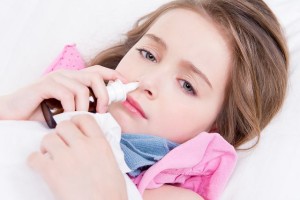 The treatment regimen for bacterial rhinitis includes several directions. In the first place, it would seem, should be the impact on the pathogenic microflora through antibacterial agents. But in practice, given the ambiguous effect of antibiotics, especially on the child's body, they are rarely used.
The treatment regimen for bacterial rhinitis includes several directions. In the first place, it would seem, should be the impact on the pathogenic microflora through antibacterial agents. But in practice, given the ambiguous effect of antibiotics, especially on the child's body, they are rarely used.
The main indications are a protracted form of the common cold with the threat of the formation of chronic rhinitis or the transition of a bacterial infection to the paranasal sinuses. In these situations, Izofra, Polydexa, Framycetin are prescribed.
The most important treatment is the use of nasal vasoconstrictors. They cause spasm of capillaries, reduce mucosal edema, and improve nasal breathing. The main thing is to strictly observe the frequency of use and the duration of the treatment course.
The next direction of treatment is to cleanse the nasal cavity from mucopurulent secretions, which helps to remove the bacterial flora and to restore the epithelium as soon as possible. For this, nasal rinsing with various solutions is used, but the technique for performing the procedure is different for an adult patient and a child.
In young children, solutions are instilled into the nasal cavity in small quantities, and after a while, the liquefied contents are removed using cotton wool, a small rubber bulb or an aspirator. In adult patients and older children, washing can be done using a teapot with a long spout. A person bends over a basin or sink, the medicinal solution is poured into one nostril, and poured out of the other and contains both mucus and pus.

Various solutions are used to rinse the nasal cavity. They can be purchased ready-made in a pharmacy (Aqualor, Aqua Maris), but you can also make them yourself. The easiest and fastest to prepare is a solution of ordinary table salt. For 500 ml of warm boiled water, 1 teaspoon of salt is required. You can use decoctions of medicinal herbs (sage, chamomile, calendula).
An important area of \u200b\u200btreatment is physiotherapy (UFO, UVF), as well as the use of general and local thermal procedures. But we must not forget that a contraindication to them is an increased body temperature.
Treatment of bacterial rhinitis is always complex, consisting of various therapeutic measures. It is important to apply each of them correctly, taking into account the characteristics of the course of the disease in a particular patient.
A bacterial-type runny nose is a consequence of the body's contact with pathogenic microflora, which, once on the mucous membrane of the nasal passages, begins to actively multiply, leading to an inflammatory reaction. In this case, it is a means of protection, the action of which is aimed at removing pathogenic microbes from the body.
Rhinitis can be caused not only by pathogenic bacteria, but also by normal microflora. This happens if a person's immunity is greatly reduced, and bacteria are able to multiply uncontrollably.
Symptoms
The symptoms of bacterial rhinitis are well known.
These include:
- swelling of the nasal passages;
- difficulties arising during nasal breathing (up to the complete inability to inhale through the nose);
- the appearance of nasal discharge, characterized by profusion;
- attacks of headaches.
A distinctive feature of rhinitis of bacterial origin in children and adults is the characteristic of the discharge. Mucus acquires, it is often thick. The discharge from the nose becomes like this, because together with it, dead bacteria and white blood cells are excreted, which ensure the body's fight against infection.
Differences between bacterial and viral rhinitis
An important element in the treatment of bacterial rhinitis is the correct diagnosis. First of all, difficulties arise when it is necessary to determine the nature of the common cold, since bacterial and viral rhinitis, in the eyes of an unknowing person, are no different from each other.
Pay attention during differential diagnosis necessary for the nature of the discharge. With a bacterial rhinitis, the discharge has a thick consistency and a yellow-green color. If the matter is in contact of the mucous membrane with the virus, then the mucus will be transparent, abundant, like water. Such discharge does not form a crust and easily come out of the nasal passages, literally "" from the nose.
Which doctor should I go to?
If you suspect the development of a bacterial rhinitis, it is recommended to contact a therapist or ENT doctor. If the pathology is diagnosed in a child, then it is initially recommended to contact the local pediatrician with a subsequent referral to the otolaryngologist.
Diagnostics
The diagnosis is usually made on the basis of:
- features of the anamnesis;
- epidemiological data;
- patient complaints;
- laboratory and instrumental research data.
Often, a medical assessment of the first three points is sufficient for staging bacterial rhinitis. If the doctor is in doubt, he can prescribe additional research measures.
The data obtained as a result of rhinoscopy are of the greatest importance in making a differential diagnosis and choosing a treatment. If a bacterial-type pathology is suspected, a swab from the nasal passages must also be examined. It can be examined directly under a microscope or by inoculation.
Treatment
A runny nose of bacterial origin is a pathology from which neither an adult nor a child is immune. Anyone has come across this disease at least once in his life, so you need to know how to help yourself or your loved ones.
The most effective treatment for bacterial rhinitis if it is carried out in a comprehensive manner. The doctor prescribes local antibacterial agents, vasoconstrictor drugs and drugs that can moisturize the nasal cavity.
Doctors generally prescribe topical antibiotics (,). In some cases, the choice of a drug that affects the cause of the disease can be made after bacteriological inoculation with the subsequent determination of the sensitivity of bacteria to certain substances.
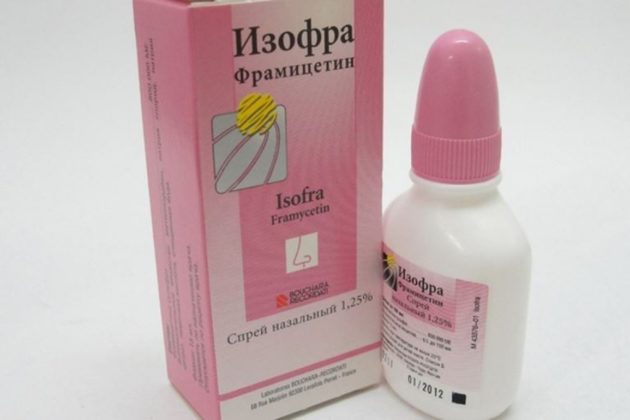
Traditional methods
Often used against rhinitis of the bacterial type:
- Fresh beetroot juice, which is instilled into the nasal passages. For the treatment of children, it is diluted with water.
- Fresh juice, which has bactericidal and antioxidant effects, is also instilled into the nasal passages.
- For instillation, a decoction of goulavitsa with calendula is also suitable. It is necessary to fill in the crushed components with 250 ml of boiling water and leave for an hour.
- Parsley juice is another effective remedythat can be instilled into the nasal passages to fight infection.
Often people make the mistake of warming up their nose during bacterial rhinitis. This can only aggravate the symptoms of the disease, since most bacteria begin to actively multiply when elevated temperature... It is imperative to obtain a physician's approval before performing warming up.
Bacterial rhinitis in a child
Bacterial rhinitis in children proceeds in the same way as in adult patients. The main symptoms are yellowish-green discharge and impaired nasal breathing.
If a child develops this pathology, it is strongly recommended to consult a doctor. A child's body is less adapted to fight infections than an adult. In the case of baby a direct threat to life is created, since babies are not yet able to fully breathe through their mouths and can suffocate.
Treatment of children with bacterial rhinitis is carried out according to the same principles as the treatment of adults. The choice of antibiotics is strictly under the supervision of a physician and treatment with this group of drugs is considered mandatory. This is necessary so that the child does not develop an acute runny nose of bacterial origin into a chronic disease.
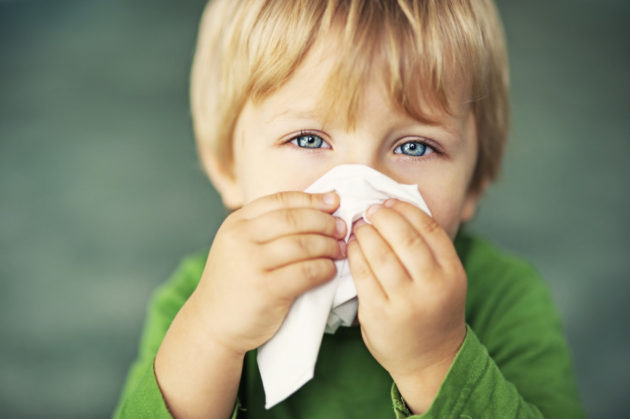
Prevention
The outcome of a bacterial rhinitis in both a child and an adult can be complete recovery or chronic infection. When correct treatment recovery occurs in most cases.
Preventive measures for rhinitis include:
- constant air humidification in the room;
- regular irrigation of the nasal cavity with saline;
- strengthening immunity using hardening techniques, adherence to the regimen, proper nutrition, and adequate intake of vitamins.
Bacterial rhinitis is a disease that anyone can face. The pathology may seem harmless, and the person decides not to go to the doctor for treatment. But if an ordinary runny nose of a bacterial nature is treated incorrectly, you can face many unpleasant complications. Rhinitis can become chronic, but most dangerous, the infectious process can continue to spread. Timely and complete treatment will save the patient from complications and help to cope with the infection.
Useful video on the treatment of bacterial rhinitis
- Bacterial rhinitis: stages of the disease
- How should you deal with such a cold?
- Traditional methods of treatment
One of the most common problems is a bacterial runny nose, which should be treated under the strict supervision of a doctor. Inflammation of the nasal mucosa often presents as a runny nose. It is necessary to eliminate as soon as possible inflammatory processotherwise complications will arise. Bacterial rhinitis is a disease of the nasopharynx of bacterial origin. How does this ailment manifest itself? The nasal mucosa is affected by infectious irritants, resulting in a blockage of the nasal passages.
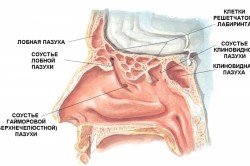
With the disease, signs are observed: the patient becomes difficult to breathe, thickened discharge of pus appears, periodically there are headaches.
Internal runny nose appears due to the fact that a favorable environment consisting of bacteria forms in the nose. This type of disease is easy to distinguish from others: the secreted mucus has a pronounced greenish tint, (sometimes yellow). A rich color indicates that there are viruses and bacteria in the mucus that provoked a runny nose. Antibiotics can be used to treat bacterial rhinitis. The disease is also treated with other drugs, with their use the treatment is more gentle.
Bacterial rhinitis: stages of the disease
The disease has three main stages. Each of them has its own symptoms. At the reflex stage of the disease, sneezing appears, the patient feels severe itching, burning, dryness in the nose. The period does not last long (up to three hours). The second stage is catarrhal. At this stage, all the most unpleasant symptoms of rhinitis are noticeable: the patient is worried about abundant discharge from the nasal cavity, at first the mucus can be liquid, then it takes on a thickened appearance, as a result, a strong swelling of the nasal cavity appears, it is because of this that congestion occurs.
Patients with such problems feel unwell, their olfactory function deteriorates. If treatment is started at the catarrhal stage, it can be delayed, in the process the patient will not feel any improvement. At the third stage, an inflammatory process develops in the nasal cavity. During this period, a person may feel an improvement in well-being: nasal breathing normalizes, mucus acquires a yellowish tint. Antibiotics are often prescribed for effective antibiotic therapy.
Back to the table of contents
How should you deal with such a cold?
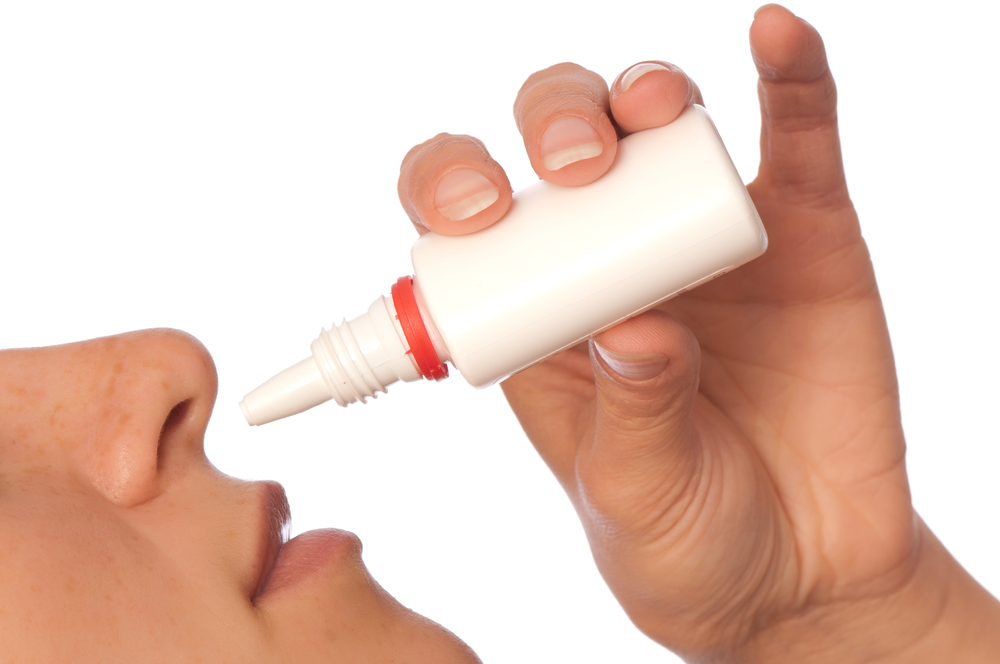 It is important to note that the treatment of bacterial rhinitis takes a long time. First of all, the patient is prescribed local antibiotic therapy.
It is important to note that the treatment of bacterial rhinitis takes a long time. First of all, the patient is prescribed local antibiotic therapy.
If you notice that a baby is suffering from a bacterial rhinitis, you should immediately consult a doctor: the disease poses a danger to the child's life. Diagnostics is carried out by an otolaryngologist.
To prescribe treatment, it is necessary to determine the nature of the disease and identify its degree. To eliminate the disease, as a rule, antibiotics, sprays, nasal drops, and special saline solutions are prescribed. It is necessary to use vasoconstrictor and moisturizing drugs. When a bacterial rhinitis is found, it is forbidden to self-medicate, the main goal of therapy is to destroy the existing infection.
Treatment should be comprehensive. In the process, effective salt showers are used, it is necessary to irrigate the nasal cavity with saline... As noted above, therapy includes the use of antibiotics.
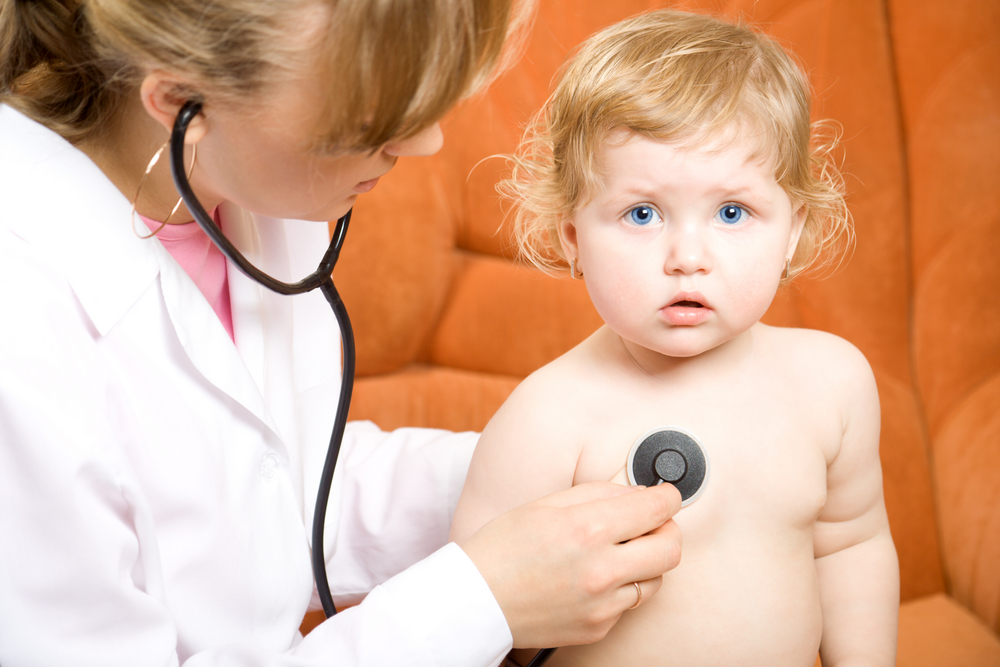 Vitamin therapy is needed to strengthen the body and its protective properties. There are many methods to help eliminate bacterial rhinitis, folk remedies are useful and effective.
Vitamin therapy is needed to strengthen the body and its protective properties. There are many methods to help eliminate bacterial rhinitis, folk remedies are useful and effective.
Saline can be prepared at home; alternatively, you can buy a preparation containing sea salt.
You can prepare this type of medicine at home. To do this, dissolve a teaspoon of salt in 1 liter of water (it is recommended to use purified boiled water). Among antibiotics, Framycetin, Isofra, Bioparox, Fyuzafyunzhin, Mupirocin have proven themselves well.
Sometimes without folk treatment not enough. As a result of taking medicines in children and adults, addiction can occur, this is not advisable. Addiction can negatively affect the functioning of all organs and tissues. Folk remedies therapies are safe, especially for children.
